By coyote vs wolf, we mean how to tell the difference between the two. As recent events in New York prove, the wolf is easily mistaken for a coyote by hunters, tourists, and even some wildlife experts.
At a distance, especially since the two are rarely seen side-by-side, it is challenging to tell the difference between a coyote and a wolf unless you study the two and know what to look for when you see them.
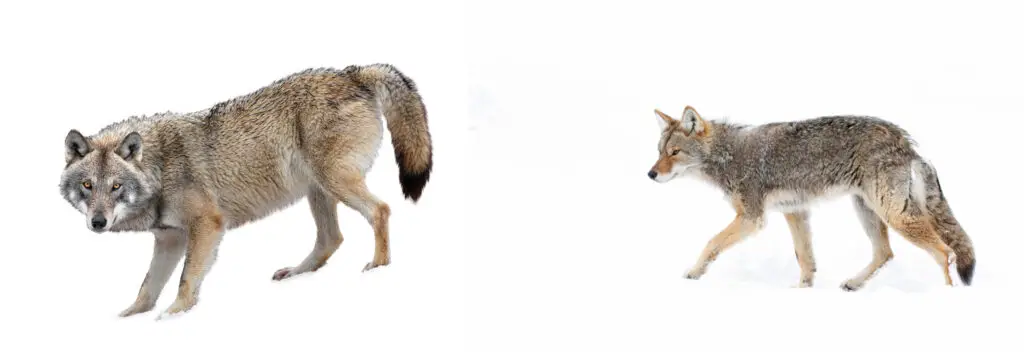
Coyote vs wolf: The biggest differences.
The difference between a coyote vs wolf is the coyote weighs about one-half the weight of a wolf. The coyote has a smaller and narrower muzzle and longer, more defined ears than the wolf’s large and boxy facial features and rounded ears. The coyote’s tail is longer and nearly reaches the ground.
Before we begin, let’s define both the coyote and the wolf.
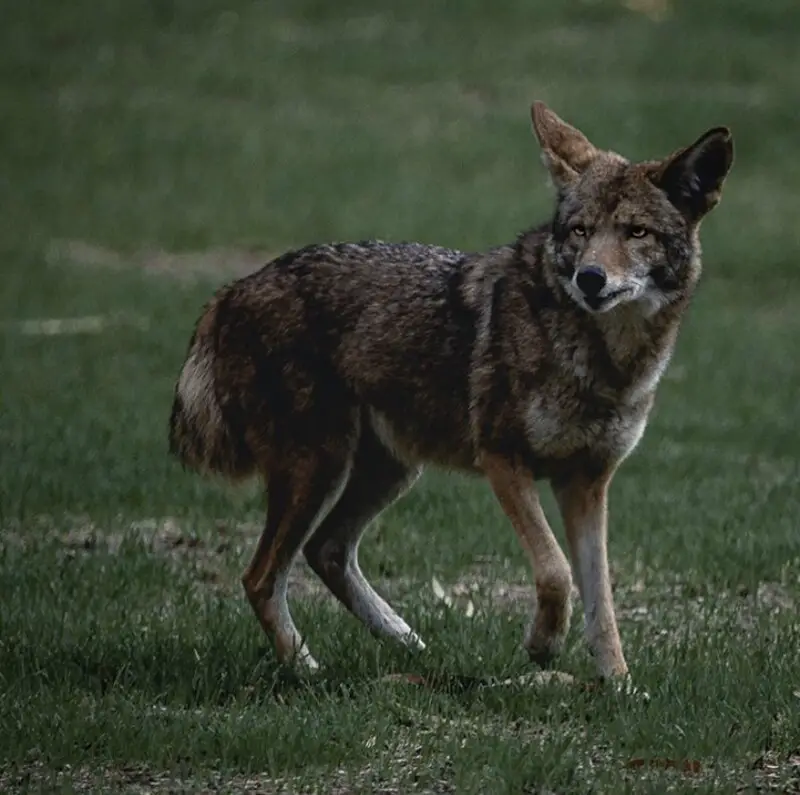
What is a coyote?
A coyote is an undomesticated canine native to North America. Its slender muzzle, bushy, low-hanging tail, and pointed ears resemble a camouflaged German Shepard. Intelligent, highly communicative, and designed to adapt and thrive in almost any environment, a coyote is also surplus-killing predator.
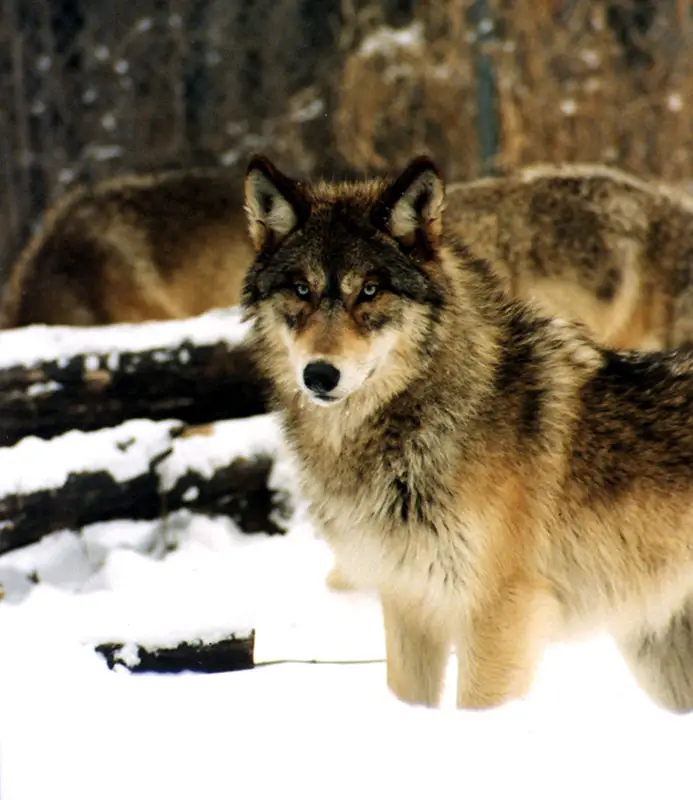
What is a wolf?
A wolf is the largest, undomesticated, predatory canid in North America. A wolf has a narrow chest and long slender legs whose front forearms’ are fused to increase running speed, even in deep snow. A wolf can run at speeds up to 40 mph.
Related: Why the gray wolf should not be allowed to return to NY.
Wolf vs Coyote: Size Differences.
In the size category of wolf vs coyote, the coyote is typically smaller in length and lighter in weight.
Measuring from nose to tail, a big coyote might reach four and a half feet in length. A big wolf can be almost six feet long.
When it comes to weight, the wolf is far heavier, but the eastern coyote seems to be gaining on it. On average, an adult wolf weighs between 50-100 pounds, and an adult coyote 25-45 pounds.
In recent years, however, coyote hunters in NY have taken coyotes weighing over 60 pounds.
The eastern coyote has a hunting season in many states. Learn how to hunt this outlaw quadruped in this article How to hunt the eastern coyote.
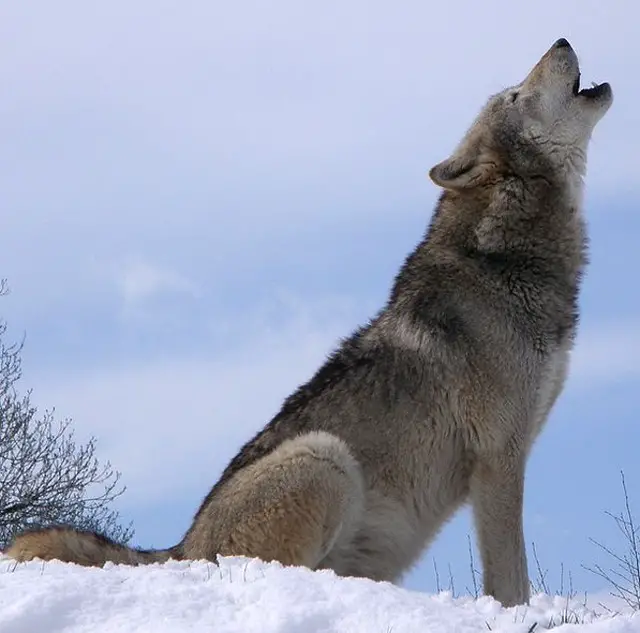
Coyote vs Wolf: Differences in how they sound.
When it comes to coyote vs wolf howls, there is a huge difference in the sounds they make.
Coyotes make high-pitched howls, often preceded by barks that include an individual’s identification. Coyote howls are usually shorter than wolf howls and feature a lot of yipping that wolves do not engage in. Wolf howls are longer than coyote howls and noticeably smoother and deeper in their tone.
The information being communicated in these howls is basically the same for each animal. Who is calling, where they are, and and the mood of the sender (threatened or unthreatened).
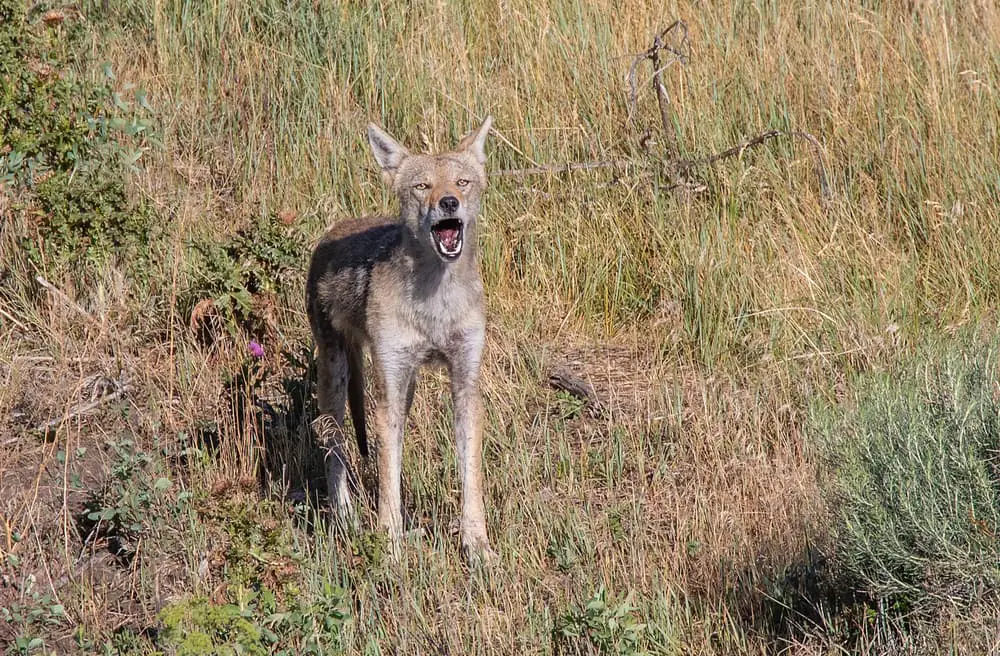
Wolf vs coyote: Who barks more?
In the barking contest between the coyote vs wolf, the coyote wins every time. The very name for coyotes, canis latrans, Literally means barking dog.
The first reason why coyotes bark so much is they live in family-only groups. Coyotes do not form packs with other coyotes they are not genetically related to for any reason.
When a coyote barks, it’s speaking to a family member who can recognize his bark. That’s why coyotes precede their howls with barks; it tells the other coyotes who is speaking.
Wolves bark more as juveniles but less frequently as they grow into adults. When they do bark, it is usually toward a threat and combined with growling. A wolf will shortly quit barking and move away or attack. A coyote will continue to bark for much longer, as it will eventually summon other members of the family that will assist it.
For my article for a full understanding of and how to translate coyote sounds.
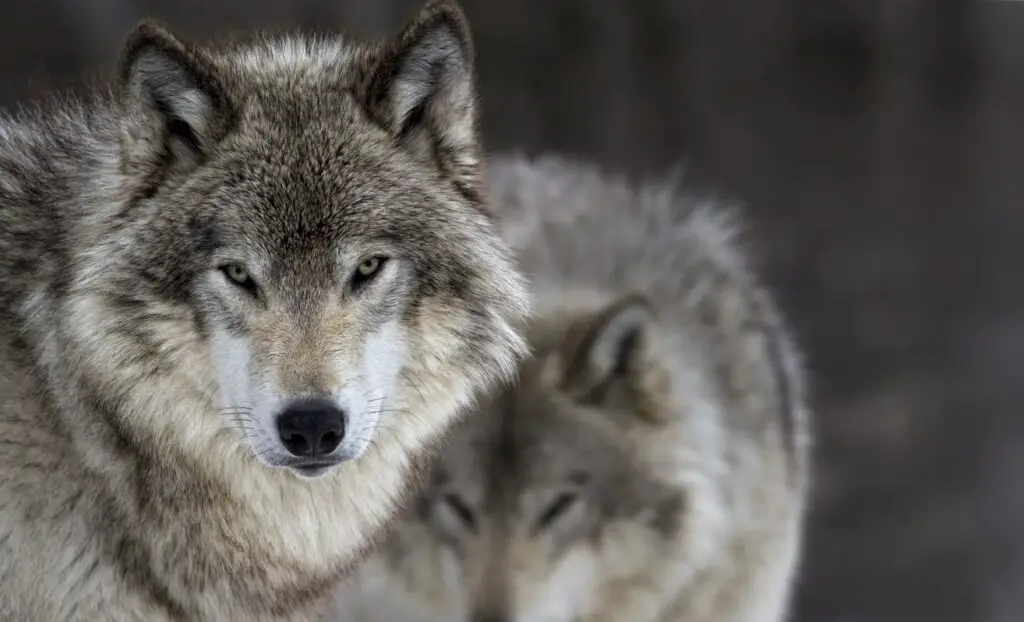
Coyote vs Wolf: Differences in coats.
Comparing the coats of a coyote vs. wolf is often easier than you would think. Most coyotes have a coat that is pale yellow to brown. The gray wolf can be all-white or all-black but tends to be a pale gray most of the time.
The wolf also has a thick, noticeable ruff of fur “like a cape” around the neck and shoulders. And one last tip, if it’s snowing, the fur on a wolf’s back will not melt. The insulation provided keep’s wolf body heat away from it.
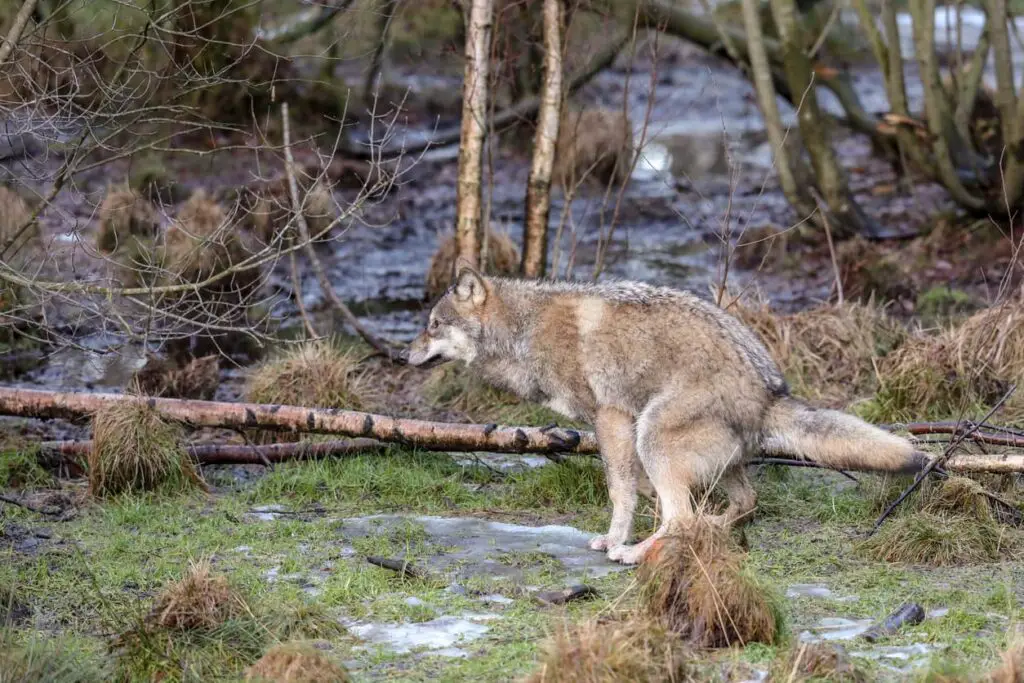
Coyote vs wolf: Poop differences.
Scat, feces, poop, or whatever you wish to call it, is like snowflakes; no two are alike. Therefore, determining who dumped (sorry) what on the ground can be difficult. The location, a few essential characteristics, and, if you are lucky, some tracks nearby should help you identify the animal, but there is often an element of uncertainty.
Coyote poop averages four inches in length and one inch in diameter. Tapered on both ends, it looks like a rope made of hair and bones. Coyote poop is typically dark in the winter and light in the summer. Coyote scat grays as it ages. It’s harder than domestic dog scat and has little to no odor.
Wolf poop is more than four inches in length (up to seven inches for big wolves) and more than an inch in diameter. It has tapered ends fringed with hair from animals like deer and hares. Wolf scat is colored brown to black and will have bone fragments from larger prey and a strong, terrible smell.
Wolf vs coyote: Diets.
The difference in coyote vs wolf poop is the result of their diets. While wolves and coyotes are meat eaters, the coyote consumes many rodents, such as mice and voles, that the wolf does not usually prey upon. The coyote has adapted to living nearby humanity and often eats our trash.
Coyotes are also naturally adapted to eating fruits and nuts because their back molars have an extended chewing surface.
For the record, despite being smaller than wolves, they are not seen as prey by wolves. In fact, nothing eats coyote.
The wolf diet consists of large animals like deer, elk, and buffalo. Their idea of small prey tends more toward beavers (a favorite) and snowshoe hares.
For more information on a coyote’s diet, read my article, What do coyotes eat?
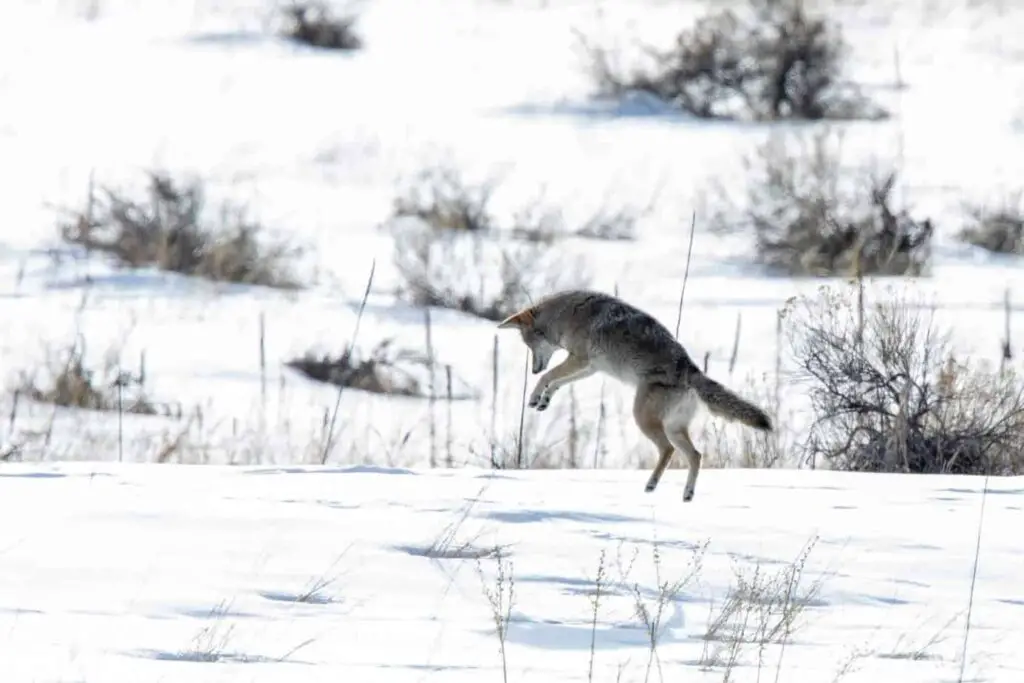 Coyote hunting mice in the snow
Coyote vs wolf” class=”wp-image-9453″/>
Coyote hunting mice in the snow
Coyote vs wolf” class=”wp-image-9453″/>Coyote vs wolf: How to tell the difference in paw prints.
Ever wonder how to tell if a dog, coyote, or wolf made a paw print you found?
Thankfully, there is one surefire way to tell if a track was made by a dog or by a coyote vs wolf: Can you draw an X between the negative spaces?
Here’s what I mean:
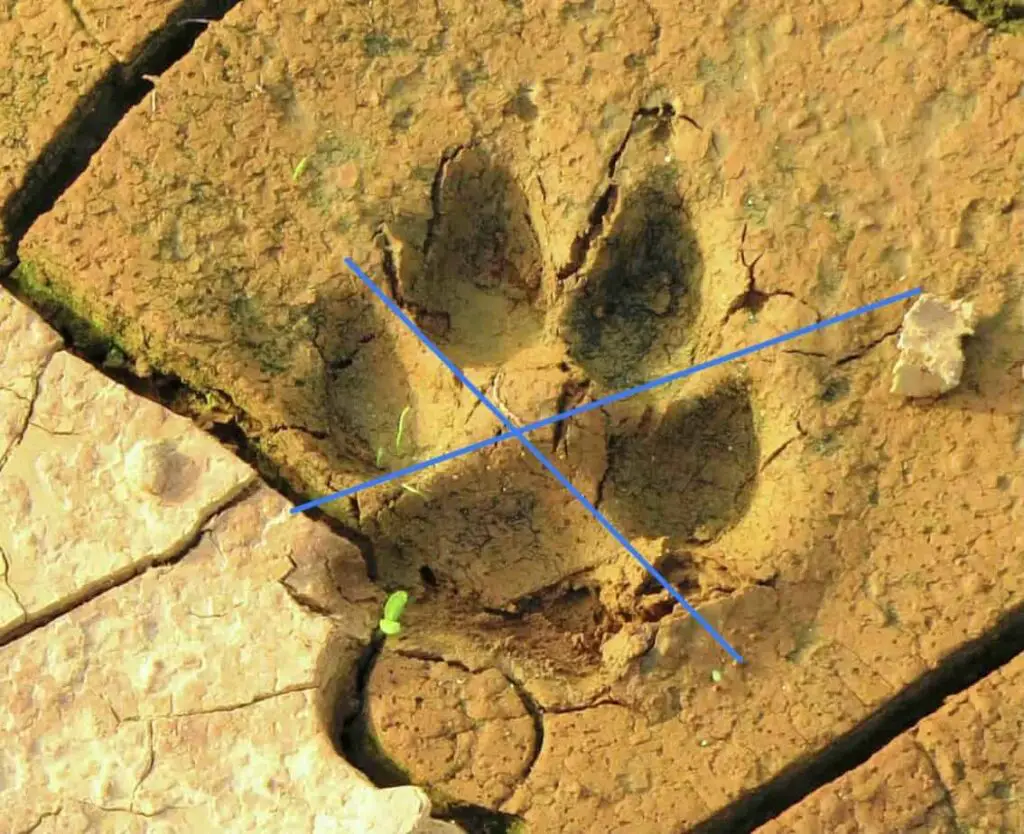
Now, notice how you cannot make the same mark on a dog print without touching the heel mark?
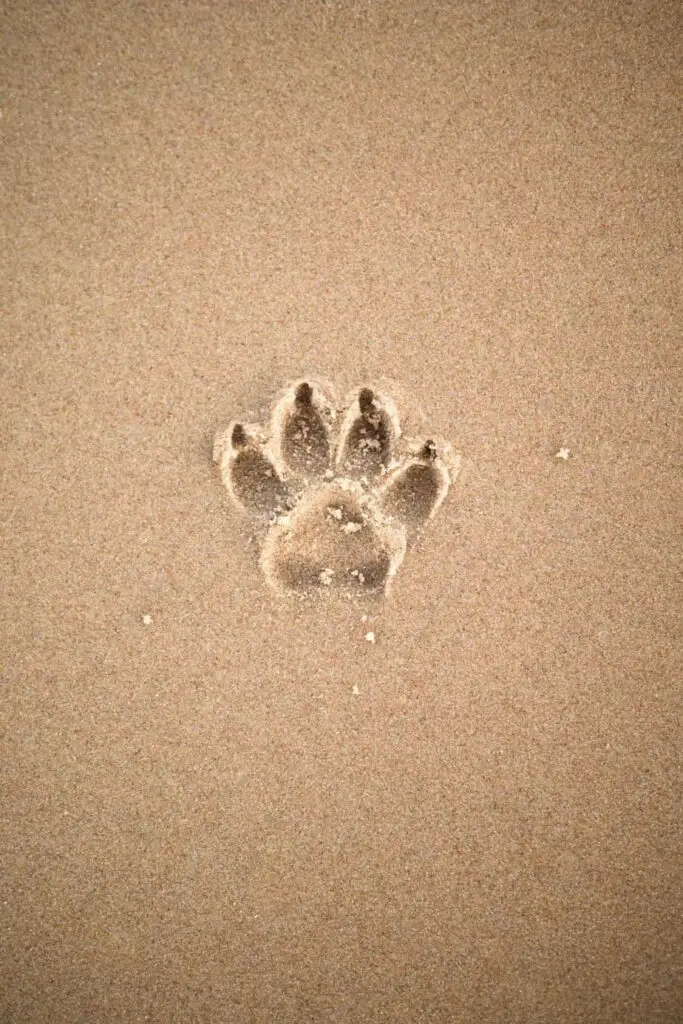
What do coyote paw prints look like?
Coyote paw prints are approximately 2 1/8 – 3 1/16 inches long by 1 5/8 – 2.5 inches wide. As with wolves, foxes, and bobcats, the rear paws are slightly smaller that the front ones.
Wolf prints are usually larger, 3.5 inches or more in length.
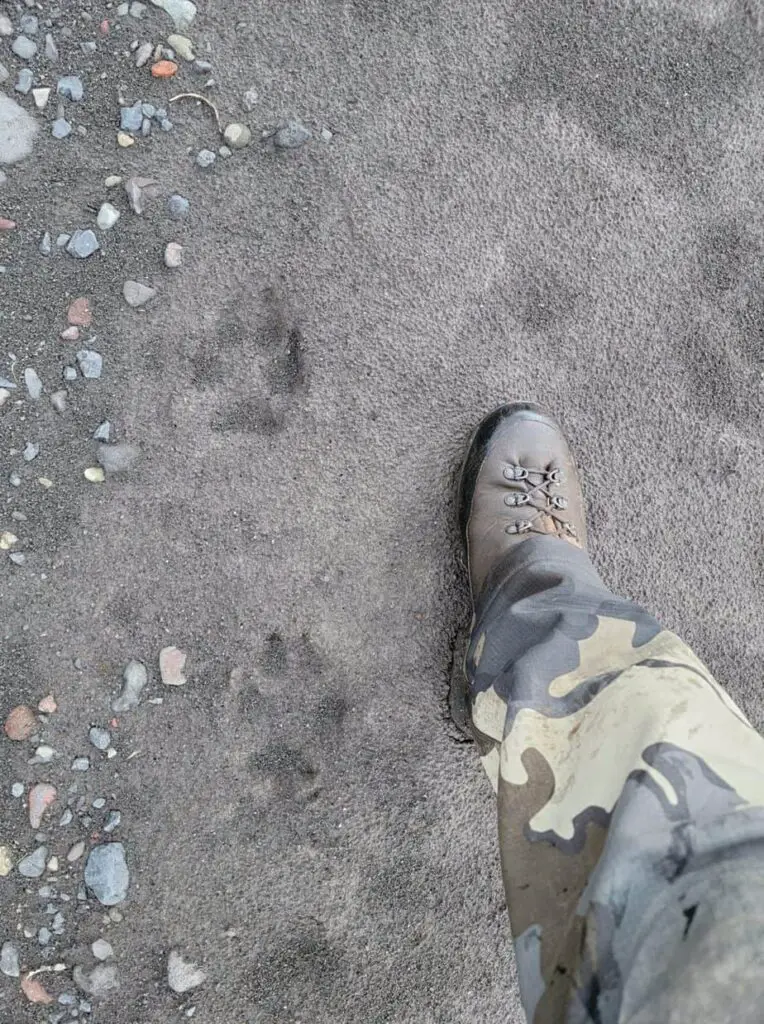
Coyotes and wolves mostly travel by walking or trotting. Unlike dogs, whose trail will go from side to side, wolves and coyotes walk or trot in straight lines.
The most relaxed gait (the pace or manner of walking) of a coyote or wolf is called “the walking gait.” The walking gait typically results in only one foot every being off the ground at any one time. When walking, the coyote’s legs move forward in an alternating, diagonal string of right front leg followed by the left hind leg, the left front leg, and the right back leg.
There are two unique walking gaits.
- Understep Walk: The understep walk is when the hind paw lands behind the front foot on the same side. You’ll find the Understep Walk used where male coyotes have changed guard/bedding positions near occupied dens. While it often suggests a level of great comfort on the part of all predators, where coyotes have had to slink away unseen from a potential threat, they will use this gait.
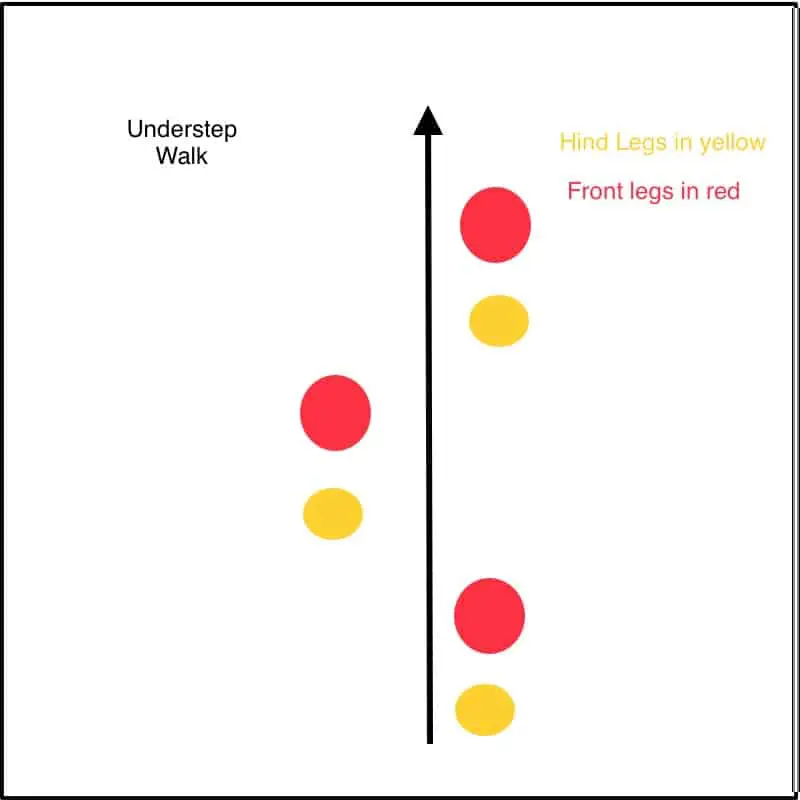
2. Overstep walk: The most common walking gait of a predator. A trotting predator may switch to the Overstep Walk when something catches its attention (a scent on the ground that needs to be examined, etc.).
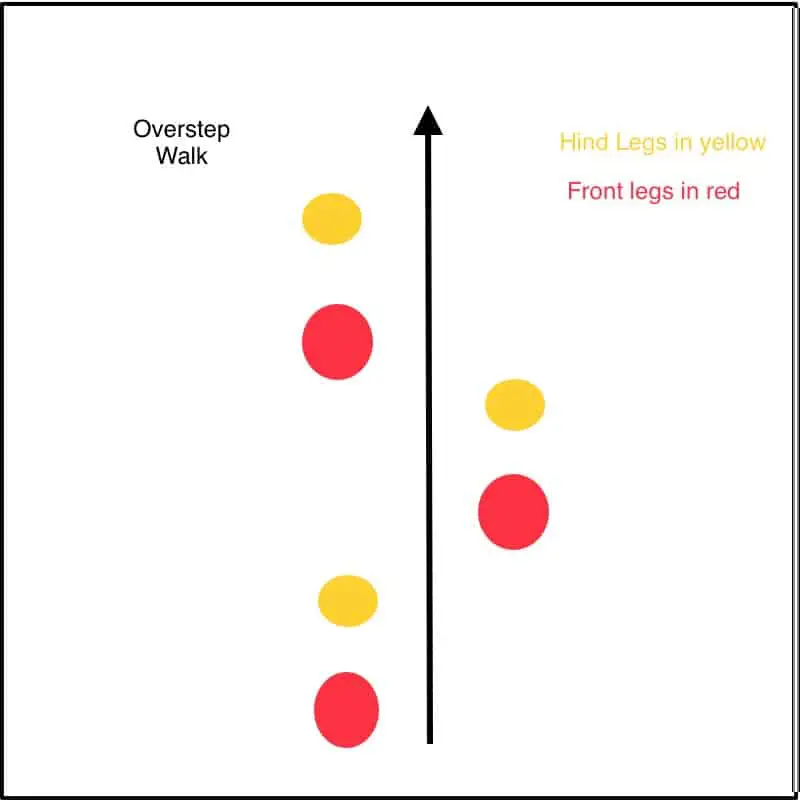
Coyote paw prints made while trotting.
Trotting is faster than walking, but it requires little effort, covers more ground in a shorter time, and is maintainable for long stretches at a time. When trotting, the legs move forward in diagonal, alternating pairs, which typically results in two feet being off the ground at any one time. As a result, coyotes spend more time trotting than in any other gait.
Trotting coyotes leave tracks that are very narrow and straight.
Direct register trot: When a coyote or wolf is patrolling or hunting inside its territory, the direct register trot is its usual gait. The understep and overstep trots are rarely seen outside of some form of group interactions.
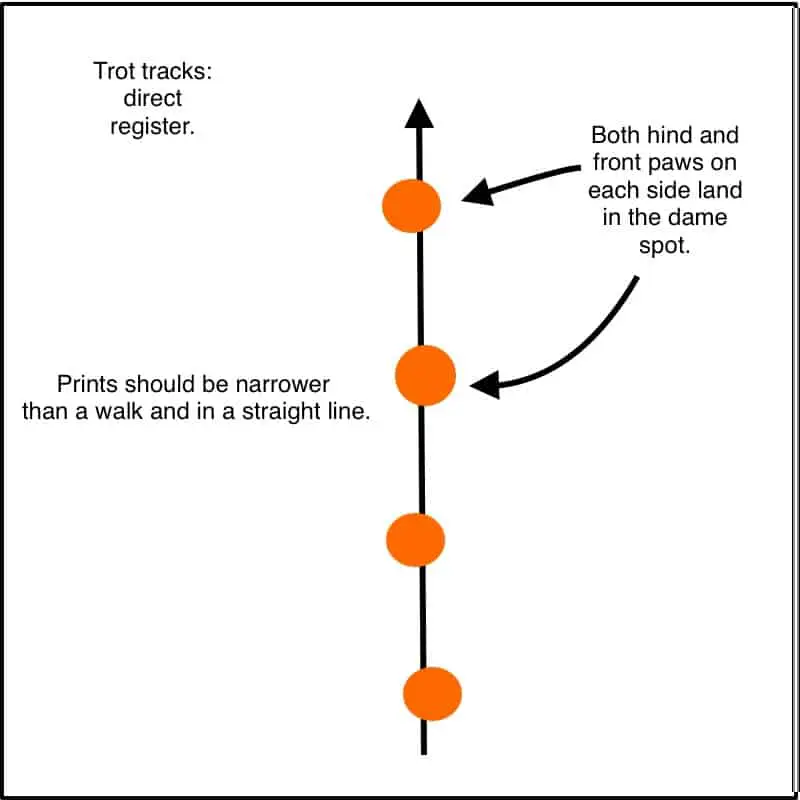
If you want to learn how to age tracks and paw prints your find in the snow, sand or mud, read my article, How to age tracks and scat.
Coyote vs wolf.
As you can see, there are many obvious differences between coyote vs wolf. But no you know how to tell the difference. Good luck!
If you like to know how the wolf effects coyotes, read this article.

